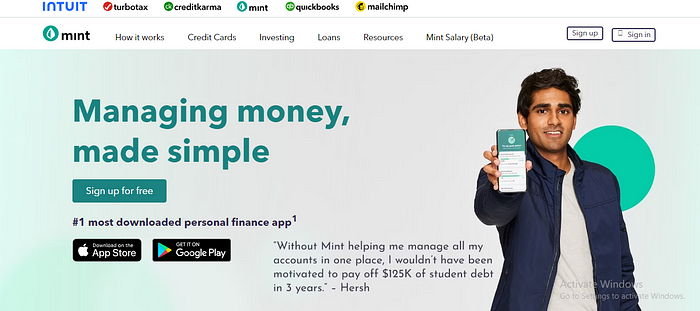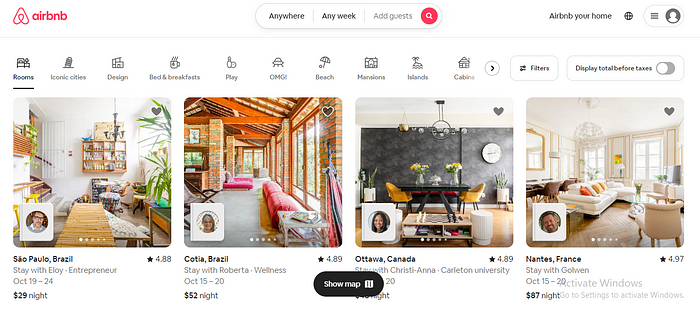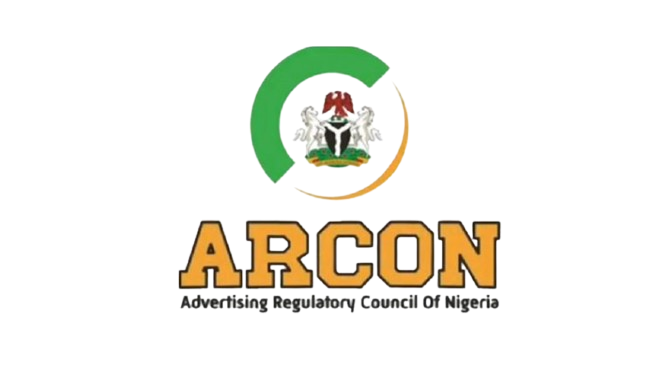- Mint
Industry: Finance
Tactics used: Partnerships with relevant blogs & SEO
Company Story:
Mint is a finance management and budgeting software. According to Aaron Patzer, CEO of Mint, in the early days, their marketing plan was “whatever we can do, basically for cheap, or for free.”
The story begins in 2007, when Aaron Patzer developed a free personal money management software. This innovative tool won the $50,000 prize at TechCrunch40. Patzer’s inspiration stemmed from his own need to manage finances for a startup. Before embarking on the coding process, he surveyed potential users to gauge interest. He adopted the philosophy of validating an idea before creating a product, prioritizing feedback over blind development. Fast forward two years to November 2009, Mint was acquired by Intuit for an impressive $170 million, an accomplishment made even more remarkable considering Mint’s nearly 1.7 million users at the time.
Are you familiar with the concept of content marketing? It involves building a community by offering valuable content, which entices users to explore your product. This strategy proved successful for Mint as well. If you visit Mint’s official website and check out their blog section, “Mintlife,” you’ll discover a wealth of practical advice on managing your finances and maximizing savings. These posts are shared without an overt agenda to promote the Mint app. The key lessons here are consistent posting and delivering engaging articles that enhance people’s lives. This straightforward yet potent approach ultimately yields results in the form of increased downloads and sign-ups.
Eventually, they expanded their SEO efforts to include relationship building, as well. They co-branded content with partners, and even sent them badges to feature on their sites. The badges simply said “I want Mint.” Thanks to this idea, Mint got free advertising and a new influx of inbound links.
Bonus Tip: Solve people’s problems.
Despite the fact that Mint wasn’t the first or the only financial service in the market, it was still a successful business from the start. That happened because it was created as an intuitive tool for people to deal with their financial tasks. Its simplicity attracted users and every element from the rapid way to create an account to the helpful procedure of categorizing every spending contributed to the fast growth of this app. You can take a look at what others do and if you make that better, then you have a valuable product.

2. Halo Top Creamery
Industry: Desserts, food
Tactic used: Advanced Instagram visual marketing
Company Story:
Halo Top Creamery is an ice cream company that is absolutely acing it on Instagram. Why? Even when they’re not posting about their products, you can still easily identify the brand in your feed, thanks to their color consistency and unique designs.
Their 589,000 followers agree.
The pastel purples and pinks go well with any dessert and the consistent usage nurtures brand recognition.
Takeaways
- Establish 3–4 main colors for your brand and stick to them throughout your content marketing channels (your Instagram, website, ads, and even videos)
- Use your colors even when you’re not posting a product-related image
- Use unique design techniques
- Create a monochromatic strategy to make your Instagram pop
- Beyond your brand, use color psychology in other areas of your marketing too.
3. Airbnb
Industry: Hospitality
Tactic used: Content hubs
Company Story: Airbnb wasn’t always the billion-dollar business that it is today. The startup’s humble beginnings date back to 2008. The founders started out by personally going door-to-door to try and convince people to list their homes on the platform.
Eventually, they turned to content marketing. While they run different campaigns and projects, the Airbnb Neighborhoods project, which they started in 2012, remains their flagship marketing tactic.
The idea behind it is that guests can make better decisions about where they want to stay by getting to know a neighborhood before their arrival. The Neighborhoods projects are nothing more than simple landing pages that feature things to do in the area through a multitude of resources:
- Photos
- Videos
- Comments and reviews
- Maps
- Categories of activities
- Places to stay
Why was it wildly successful?
According to a recent study, the new generation today yearns for experiences and human connections. Airbnb focuses on creating content that celebrates cultures and traditions unique to the destinations they serve. All of that, without being overly in-your-face salesy and adding the voice of their audience for authenticity (think: comments and tips on the landing pages).

Takeaways:
- Think beyond featuring your own products or services in every content you produce — think about how you can be genuinely helpful to potential buyers
- When creating a content hub, make sure to be specific about all the details — you don’t want your visitors to wander over to other publications in search for more info
- Don’t leave out the voice of your audience — add their comments or quotes to your content hubs to generate an authentic feel
Do you want to penetrate a competitive market using digital marketing? Visit www.adlantique.com to book a free consultation.




